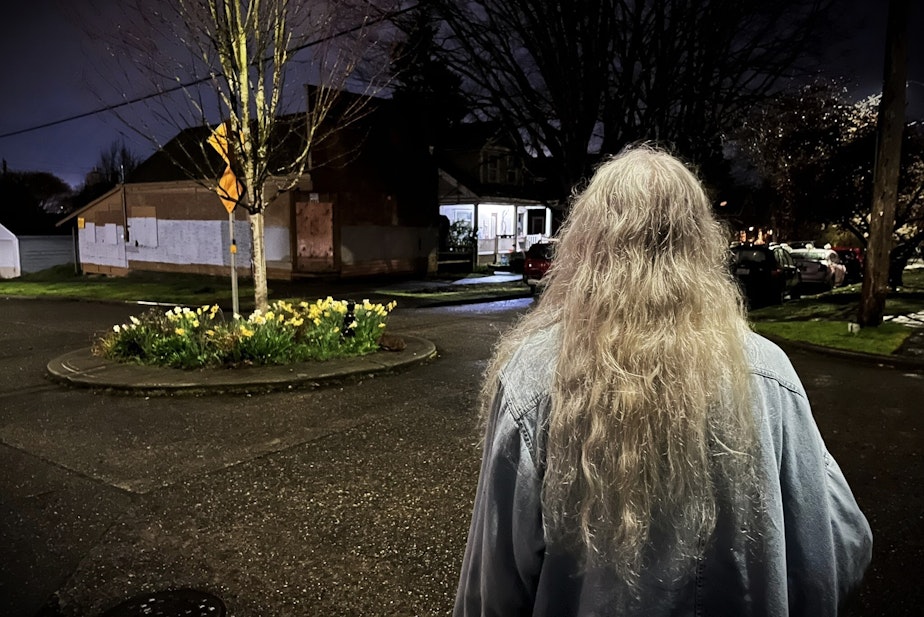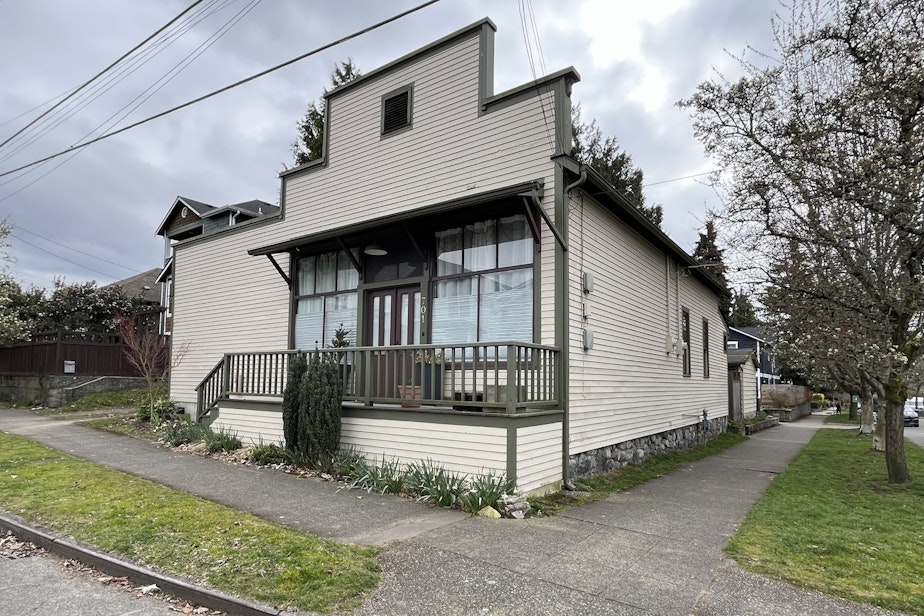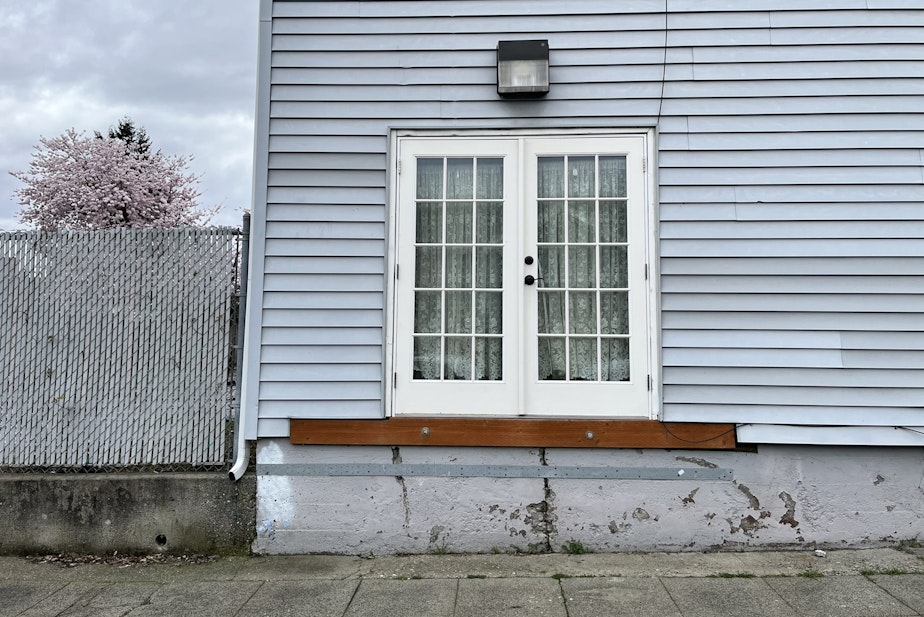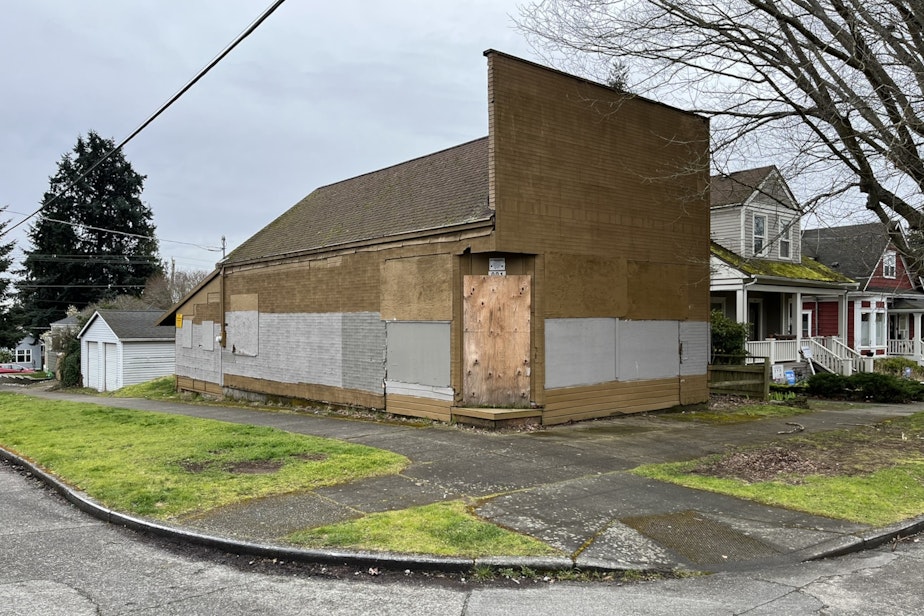Can the 'ghost corner stores' of Seattle's past rise from the dead?

Seattle’s goal is to reduce driving so much that we can one day run most of our errands in our own neighborhoods.
And corner stores could play a significant role in that.
It turns out there are ‘ghost corner stores’ hidden all over the city, which could come back to life under the city’s new growth plan.
I
’m walking down a quiet residential side street in Seattle’s Greenwood neighborhood. It’s lined with bungalows and street trees.
An architectural historian named Becky Wong is with me.
Among the houses we pass, one stands out. It's obvious that people live in it — but it just looks different. It has big windows facing the sidewalk.
“This definitely screams store," Wong says. "You have that glazing that's in front around the two front doors. So people could walk up, see what's in the store, and walk in.”

 1 of 2
A historic corner store at N 76th St and Fremont Ave N. The owner says old timers used to tell him they bought candy there as children.
1 of 2
A historic corner store at N 76th St and Fremont Ave N. The owner says old timers used to tell him they bought candy there as children.
There’s a little roof above the door, and a big, flat wall above that, where there probably used to be a sign.
You can see traces like this in neighborhoods all over the city.
I call these buildings "ghost corner stores."
“I think that's a perfect name for them,” Wong says. Because like ghosts, they remind us of the past: A time before zoning laws made it illegal to build corner stores on sleepy side streets; a time when people got around Seattle by streetcar.

 1 of 2
Doors at odd heights can offer clues. Was this a loading door? A second store entrance?
1 of 2
Doors at odd heights can offer clues. Was this a loading door? A second store entrance?
“People would get off these trolley lines, visit the store on their way home," Wong adds. "And that's a perfect, perfect example of when we used to not be so reliant on cars to go to supermarkets.”
Seattle officials want to get people out of their cars. So it's natural they'd turn to that past for some inspiration. That's why they want to make corner stores legal to build or reopen on any residential street corner in Seattle.
This corner store in Georgetown managed to maintain its commercial use for over 100 years, showing a living example of what could be the future for other Seattle neighborhoods.
(Having trouble viewing the interactive graphic below? Try refreshing your browser!)
They don’t have to be stores. They could be restaurants, or day cares —whatever kind of business makes sense for the location.
I’ve been working through a list of ghost corner stores that people sent me on social media.
I like to stop people out walking their dogs and quiz them. So I flagged down Heng Anita Laigo.
“What do you think that building was historically?” I asked.
“Oh, I thought it was a church," Laigo says.
“It was a corner store,” I tell her.
“Oh, really?” she asks.
In Ballard’s West Woodland neighborhood, there's another one. It’s been boarded up for years. Parts of the wood foundation appear to be rotten.
Julie Cheek has been eyeing it since she moved to Seattle from Paradise, California, where she lost her apartment in a wildfire.
“I just started walking around the building, just looking at it and trying to figure out what the heck it was. And I figured it might've been a store,” she says.

Cheek's waiting for a financial settlement from the utility company that started the California fire. When that comes through, she hopes she can convince the owner of this old corner store to sell it and let her turn it into a neighborhood cafe.
“Like a mom and pop kind of place to cook chili, lasagna ... just simple comfort foods like that," she say. "And should a homeless person or something come by, possibly feeding them, giving them a job around the place there to work it off.”
The corner stores revival is one element of the City of Seattle’s proposed comprehensive plan, which guides how the city will grow. To become law, the city council still needs to write and vote on the actual policy.
The details of that policy will help determine whether reviving “ghost corner stores” — or even building new ones — makes financial sense.
Hear more about corner stores and how they could help make Seattle a "15-minute city" in a recent episode of KUOW's economics podcast, "Booming," below.

